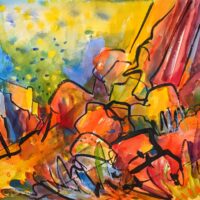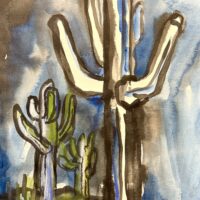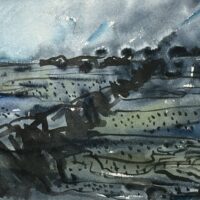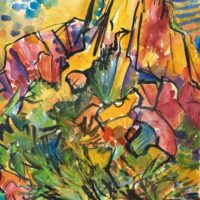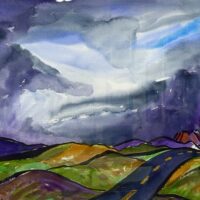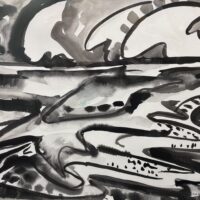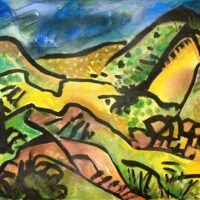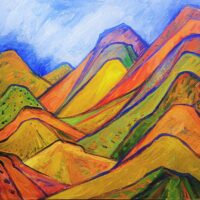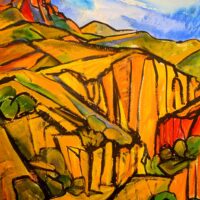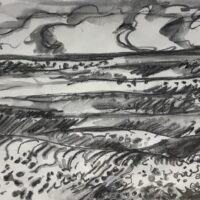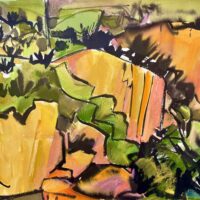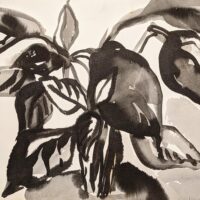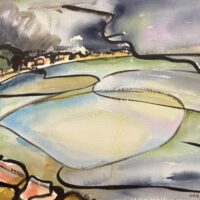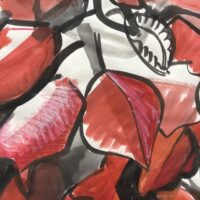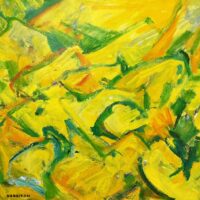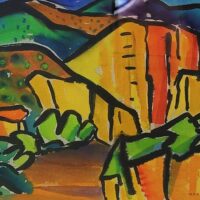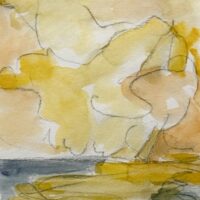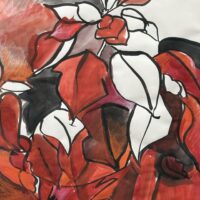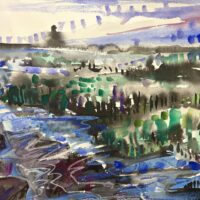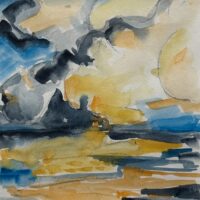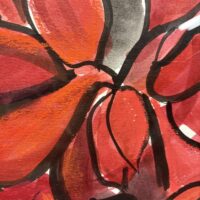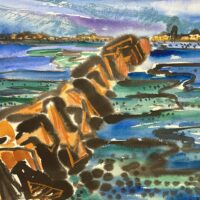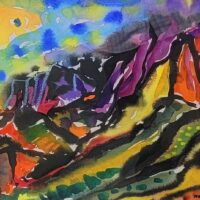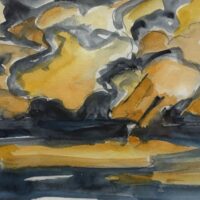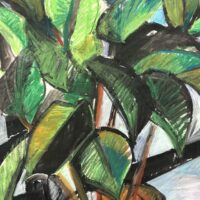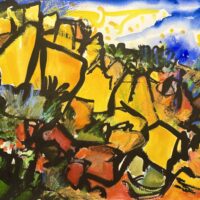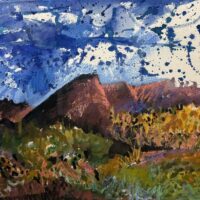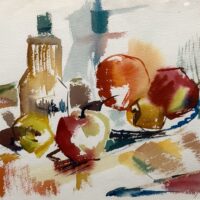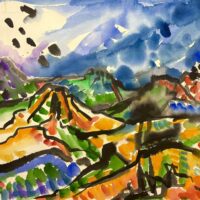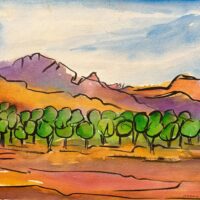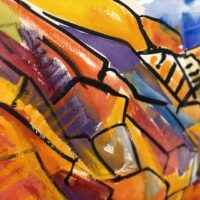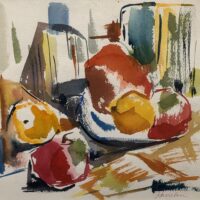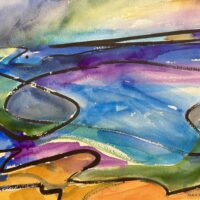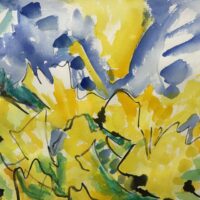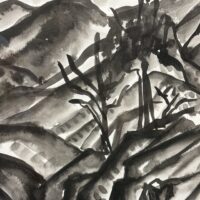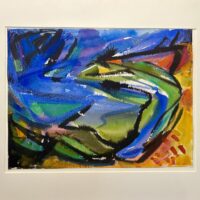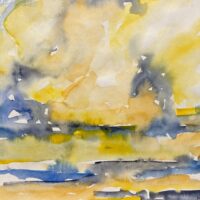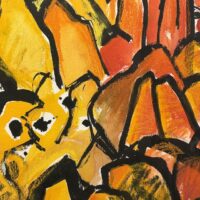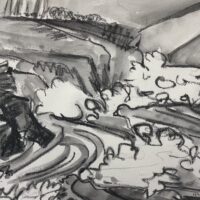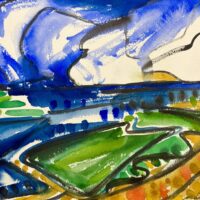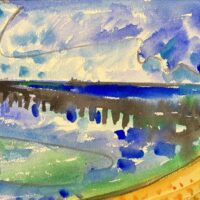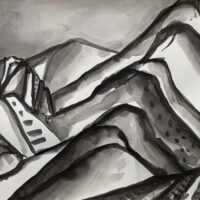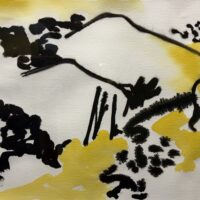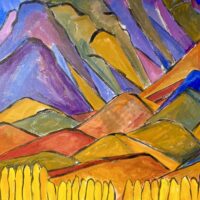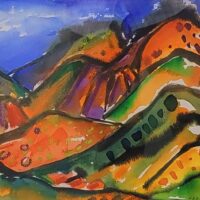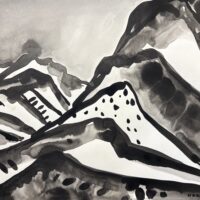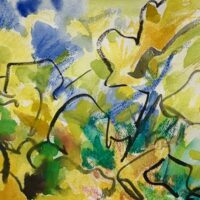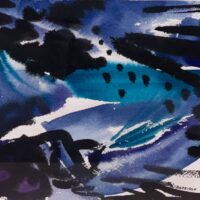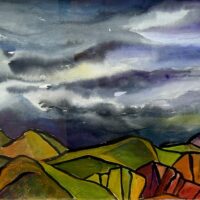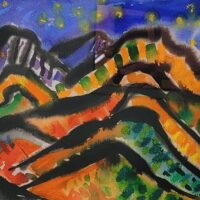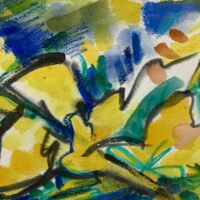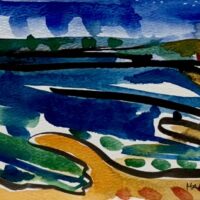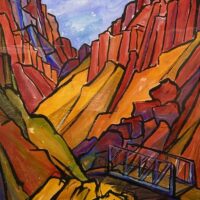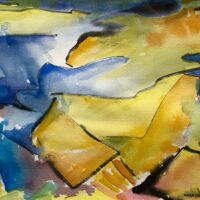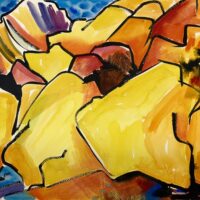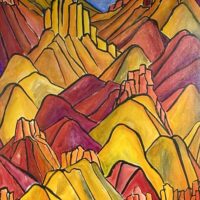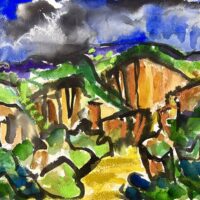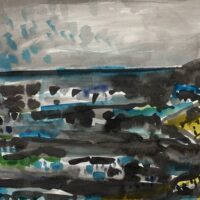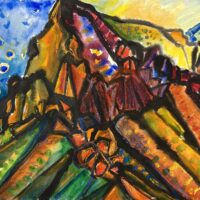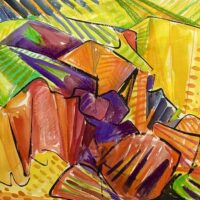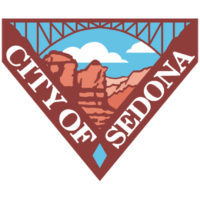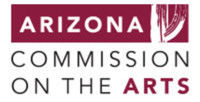Myrna Harrison
1932-2025
Myrna Harrison was born in Hollywood, CA in 1932. Her father was an animator for the cartoon division of Columbia pictures, her mother a hat designer. She cannot remember a time that drawing and painting were not part of her life.
Her family moved to New York City in 1943, where she attended Music and Art High School. After briefly attending the University of New Mexico in Albuquerque, she returned to New York City to study art at the Hans Hofmann School of Fine Art, NYC and Provincetown, MA. She showed in numerous juried and invitational group shows in the 50s, including the International Watercolor Biennial at the Brooklyn Museum.
She married Earl Pierce, a painter and former Hofmann student in 1954. In 1959 she received a BA (magna cum laude with Honors in English) and in 1960 an MA (English) from New York University. At NYU she studied with Philip Guston.
In 1960, Myrna and Earl moved to California, where she was a Teaching Assistant in the English department at UC, Berkeley. She and Earl Pierce were divorced in 1965. She remained in California for the next fifteen years and became Assistant Dean of Instruction at Contra Costa College in 1974 and Dean of Instruction at San Jose City College in 1976.
In 1980 she moved to Phoenix, Arizona to become President of Rio Salado Community College (1980-85), Gateway Community College, (1985-88) and Phoenix College (1988-93). She retired in 1993 and moved to Wickenburg, Arizona to a studio overlooking a saguaro-filled canyon of the Sonoran Desert. Her expressionist, color-saturated paintings of the desert, canyons and mountains surrounding her evoke the vibrant, fierce landscape of the southwest.
In an interview with Arizona PBS in 2000, the reporter asked Myrna: “When you paint, do you think about the viewer?”
Myrna replied:
“I do believe that you must get your work out there and have viewers. I think that otherwise, it’s an incomplete act. When I hear a painter say, ‘I only paint for myself and I only paint what makes me feel good,’ I think: No, painting is a communication. The process is unfinished if the work isn’t seen by other people. I want people, when they see my work, to understand what I feel about the desert. You cannot live here without enormously adapting to it. The desert will not adapt to you. I want people to see that- the intensity of it and the dynamic quality of it, and the fierceness of it. It’s a very fierce landscape. It doesn’t even meet you halfway- just like the ocean. You can put your toes in, and splash around a little- but you can’t go any further.”
Myrna Harrison passed in January 2025.


